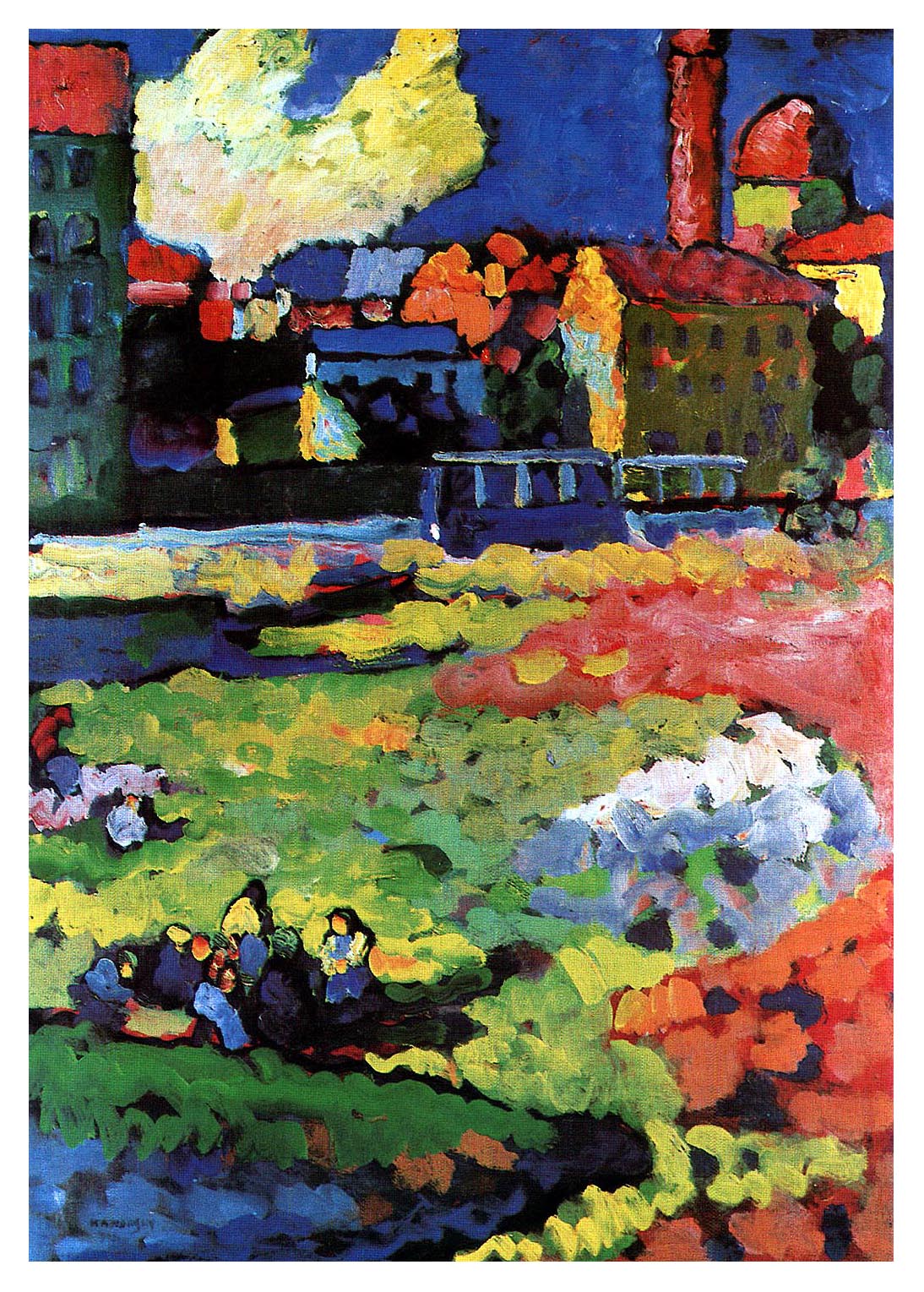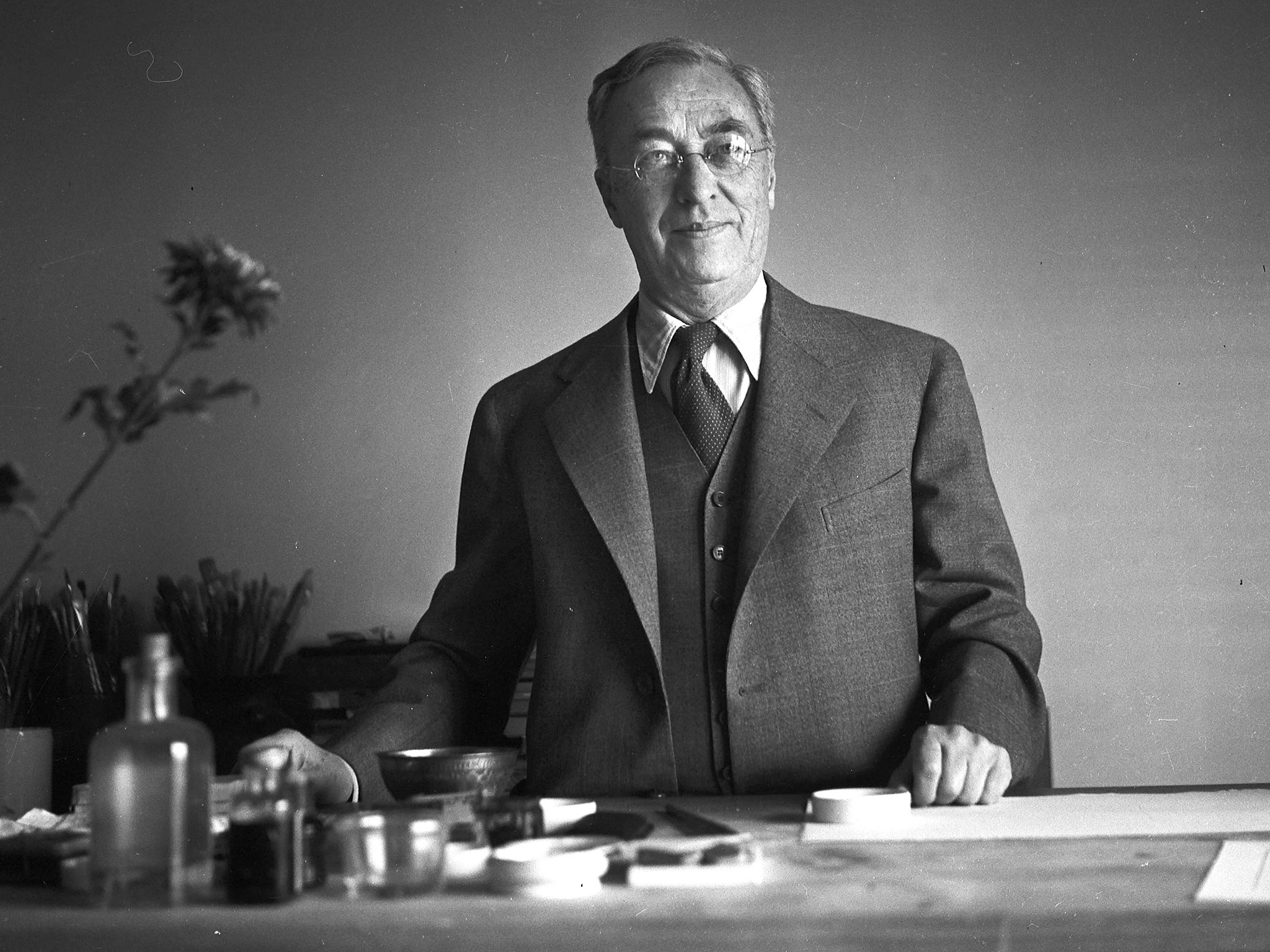



Munich-Schwabing With the Church of St. Ursula
oil on canvas • 68.8 х 49 cm
During his youth, Kandinsky received a solid grounding in several academic fields, and studied a variety of subjects from law and economics to music, and was appointed lecturer at Moscow State University’s School of Law in 1893. After working there for several years as a lecturer, Kandinsky decided to pursue an education in painting, and left Russia for Germany in 1897 in order to study at Munich’s art academy. Using his home in the city of Murnau, just south of Munich, as a base, Kandinsky traveled widely between 1903 and 1908, journeying through Western Europe and Africa to the Netherlands, France, Tunisia and Italy.
Kandinsky’s early work was primarily influenced by the Art-Nouveau movement that was spreading across Western Europe at the turn of the twentieth century, and consequently is marked by broad areas of color and rhythmic lines. However, his style was to soon change, and by 1910, he produced what many art historians widely recognize as the world’s first abstract painting. During his early years in Munich, his work experienced an evolution, whereby it metamorphosed from landscapes to “powerful visions of a world dreamed of or imagined in which impinging lines of force and surging patches of color reinvest the creative gesture with all its primal violence and energy.”
 Wassily Kandinsky
Wassily Kandinsky